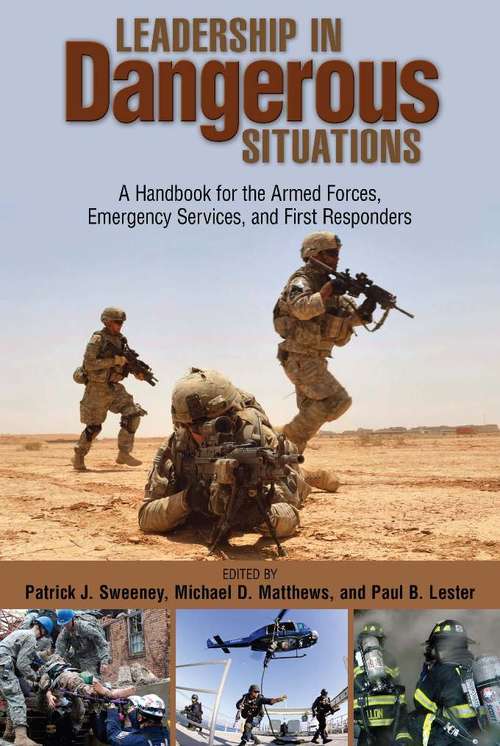Leadership in Dangerous Situations
By: and and
Sign Up Now!
Already a Member? Log In
You must be logged into Bookshare to access this title.
Learn about membership options,
or view our freely available titles.
- Synopsis
- Leadership in Dangerous Situations provides in-depth coverage of the key psychological, social and organization factors that impact individual and organizational effectiveness for First Responders in dangerous environments. Leading scholars discuss how current theories and empirical research provides guidelines to help solve the challenges leaders are likely to face in dangerous contexts. This book is directed to First Responders leaders from the Military, Law Enforcement, Fire, Emergency Services and Not-for profit agencies working in dangerous areas. The purpose of this book is to assist the First Responders who risk their lives to serve the public, to prepare for the unique challenges of leading and operating in dangerous situations. Dangerous situations are environments where group members must routinely engage in events that place their physical and psychological well-being at risk to accomplish the organization's objectives. International scholars and practitioners from the military, law enforcement, fire and rescue, teamed together to address the unique challenges facing dangerous context leaders. Each chapter integrates theory and research with practical experience to address the various challenges these leaders will face while operating in dangerous situations. The intent is to provide practitioners an easily understandable guide, backed by scholarly findings, to prepare themselves and their organizations for the unique psychological, social, and physical challenges of leading and operating in dangerous contexts. The blending of theory and empirical research with practical experience clearly illustrates the principles of effective leadership in dangerous contexts Whether one is a young leader preparing for war, a seasoned commander with multiple combat tours, a Special Weapons and Tactics (SWAT) team leader, Emergency Medical Technician (EMT) supervisor, first line supervisor of a law enforcement patrol unit, or a lieutenant responsible for a shift of firemen, the challenges of leading people in contexts where life and death decisions are common are very similar. The purpose here is to provide the leader with a better understanding of what is required to lead in dangerous contexts. The contributing authors delve into the psychological, social, and physical factors that can impact the ability to lead, the ability of personnel to perform, and the organization's ability to accomplish the mission. In the end, the leader will take away not only a understanding of how leading in dangerous contexts is different than leading in contexts where lives are not on the line, but also gain a deeper understanding of why it differs, where commonalities occur, and - perhaps more importantly - how to prepare leaders, whether military or civilian to guide their first responder organizations to perform successfully in dangerous situations.
- Copyright:
- 2011
Book Details
- Book Quality:
- Publisher Quality
- ISBN-13:
- 9781612510613
- Related ISBNs:
- 9781591148326
- Publisher:
- Naval Institute Press
- Date of Addition:
- 09/21/14
- Copyrighted By:
- the United States Naval Institute
- Adult content:
- No
- Language:
- English
- Has Image Descriptions:
- No
- Categories:
- Nonfiction, Psychology, Education
- Submitted By:
- Bookshare Staff
- Usage Restrictions:
- This is a copyrighted book.
Reviews
Other Books
- by Michael D. Matthews
- by Patrick Sweeney
- by Paul B. Lester
- in Nonfiction
- in Psychology
- in Education
